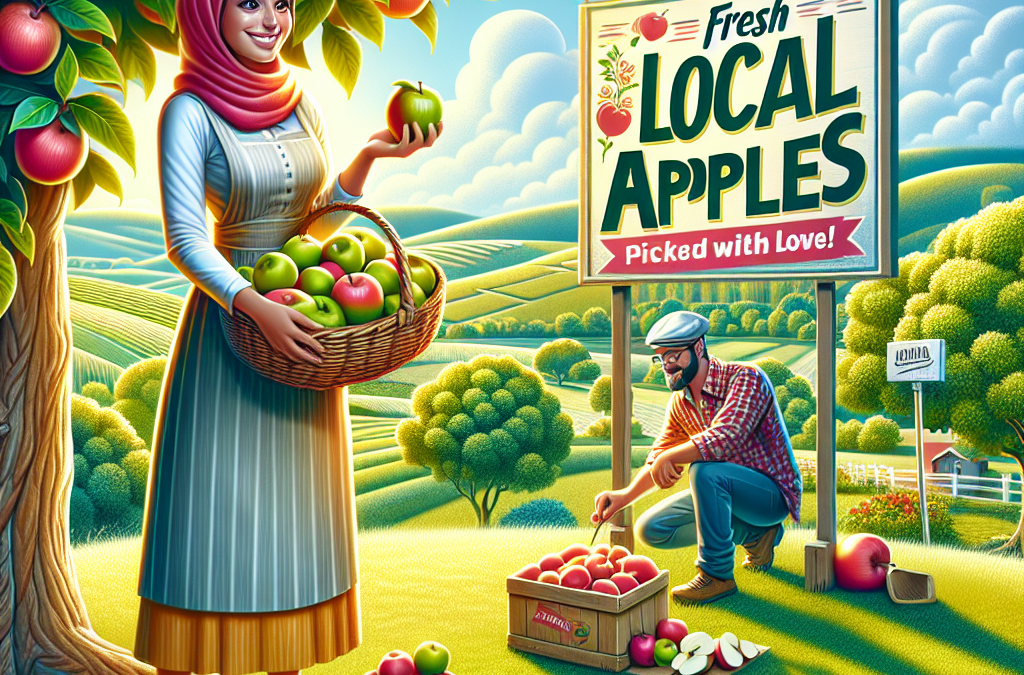Hey there! As someone who’s been in the marketing game for a while, I’ve learned a thing or two about how to catch people’s eyes with local ads. Today, I want to share some tips that will help you create ads that are not just pretty, but also effective. Let’s dive in!
Understanding Your Target Audience
Research Demographics
First things first, knowing who you’re trying to reach is vital. I always start my campaigns by digging into demographics. Utilizing resources like social media insights or even local surveys can help you paint a clearer picture of your audience. Are they young families, college students, or maybe retirees? Each group has different interests, and understanding this makes it easier to tailor your ads.
Once you have a grasp of your audience’s age, gender, and interests, you can use this data to guide your design choices. For example, bright and bubbly colors may resonate with a younger audience, while a more subdued palette could appeal to an older crowd.
Remember, the more you know about your target audience, the more effective your ads will be. You want them to feel like your ad was made just for them. Plus, it creates a sense of connection that can really drive engagement.
Identifying Preferences and Pain Points
Next, get to know what your audience actually wants. What are their needs and pain points? I’ve found that asking questions such as, ‘What problem does my product or service solve for them?’ can be invaluable. Once you identify these points, you can highlight them in your ads.
This could mean showcasing how your local coffee shop provides a quick, refreshing escape for busy professionals. Or maybe your new fitness center promises to help individuals achieve their health goals in a supportive community environment. Each of these touches can differentiate you in a saturated market.
This step isn’t just about providing the right product; it’s about showing your audience that you genuinely understand and care about their needs.
Crafting the Right Messaging
Once you’ve nailed down your audience and their preferences, it’s time to think about the messaging. Keeping your ad language friendly and relatable is key. You want someone to feel excited to engage with what you’re offering, not like they’re being sold to.
For instance, rather than saying “Our pizza is the best!” try, “Craving a late-night slice? We’ve got you covered!” This approach feels more personal and relatable. I’ve seen firsthand how a slight change in phrasing can lead to increased engagement.
Your ad’s messaging should consistently reflect the personality of your business while resonating with the audience. Keep it real, and don’t be afraid to show some personality – it goes a long way!
Choosing the Right Visual Elements
Selecting Color Palettes
Color impacts how people perceive your brand and elicits emotions, so choose wisely! During my marketing journey, I’ve experimented with various color palettes and noticed distinct responses. For instance, warm colors like red and orange can create excitement and urgency, while blues and greens tend to calm and provide a sense of trust.
Selecting a color palette that aligns with your brand image is important. Hierarchies within the colors (i.e., a dominant color and some complimentary shades) can help create a visual flow that draws folks in. I love using tools like Adobe Color to easily pull together harmonious color schemes.
Just remember: less is often more! A cluttered palette can confuse potential customers. Stick to a two or three-color scheme that reflects your brand’s personality.
Incorporating Eye-catching Imagery
High-quality images can make or break your ad. Personally, I always opt for professional photography or well-designed graphics that align with the message I’m trying to convey. Stock photos can be tempting, but they often lack authenticity and can make your ad feel generic.
For local ads, try showcasing actual products or even happy customers enjoying your service. This not only builds trust but creates a more personal connection with viewers.
Lastly, ensure that your imagery is relevant to the audience you’re targeting. Capturing the essence of your community or the people in it can add tremendous value to your ads.
Utilizing Clear Typography
The text in your ad needs to be legible and clean – and it should reflect your brand’s voice! I often see ads that have funky fonts which may look cool but can be hard to read. Stick with something that balances creativity and clarity.
Contrast is crucial too. Make sure that your text stands out against the background. If you have a bright image, opt for darker text, and vice versa. This ensures that your message doesn’t get lost in the design.
Moreover, be mindful of text size. I prefer to keep things minimal and straight to the point. A clear headline, a little body content, and a call to action can work wonders.
Innovating with Different Ad Formats
Print Ads That Stand Out
While digital marketing is all the rage, I firmly believe that print ads still hold significant value, especially in local marketing. When creating a flyer or a postcard, I always suggest using high-quality paper and engaging designs to grab attention.
Make sure to include your branding elements, a catchy headline, and a compelling image. It’s also beneficial to include a unique offer for recipients, like a discount code or a freebie. These little camps can be a huge motivator for people to take action.
Distributing print ads in the right locations can make a huge difference. Think about where your target audience frequents and get your materials in places where they’ll see them!
Leveraging Social Media Ads
Social media platforms offer amazing opportunities for hyper-targeted advertising. Based on the audience engagement I’ve observed, I recommend utilizing eye-catching visuals paired with short, concise messaging. Don’t forget about Instagram and Facebook stories—they’re a fabulous way to create ads that feel refreshingly casual yet impactful.
Creating video content can be a game-changer. A quick behind-the-scenes look at your business or a time-lapse of a project can captivate your audience in a way static ads just can’t. Plus, you can repurpose this content across various channels, stretching your marketing dollar.
By telling your brand’s story or showcasing how your product works, you not only contribute value to the viewer but also enhance their connection to your brand. People connect with stories, so don’t shy away from sharing yours!
Using Outdoor Advertising
Billboards and posters are classic forms of advertising that can make a strong impact. However, I’ve realized that simplicity is key here. Your message should be digestible in just a few seconds since that’s how long people might glance at it while driving or walking by.
Bright visuals, a few key words, and your call to action are essential. I’ve seen ads that boast complex messages, but honestly, they often get lost in translation. Less is definitely more for outdoor ads.
Choosing strategic locations for your outdoor advertising is just as important. Think about where your audience spends their time and put your message there—it’s all about being present in their daily lives.
Testing and Analyzing Your Ads
Gathering Feedback
Once your ads are live, it’s crucial to gather feedback. This can come from customer surveys, social media commentary, or direct conversations. I’ve often used informal feedback to tweak and improve future ads. It’s all about understanding what resonates and what doesn’t!
Your audience’s reaction can be an undeniable indicator of what’s working. If you notice a lot of engagement, that’s a big win! And if something falls flat, it’s a learning opportunity. Ads that are constantly evolving based on feedback can significantly enhance your marketing strategy over time.
Don’t take it personally; marketing is a continual learning process. Embracing this mindset has allowed me to consistently deliver ads that hit the mark.
Using Analytics Tools
In today’s digital world, there’s no excuse not to make use of data analytics tools. I always track the performance of every ad campaign using tools like Google Analytics or social media insights. Metrics like click-through rates, conversions, and engagement can provide invaluable insights into your ad effectiveness.
If you notice a drop in performance, delve in and reassess your approach. Maybe the visuals are outdated, or perhaps the messaging isn’t aligning with current audience needs. Recognizing these shifts can help steer your campaigns in the right direction.
Using analytics isn’t just for large corporations anymore; even small businesses can glean a lot of insights that inform their advertising strategy, keeping them competitive in their local markets.
Adjusting Strategies Based on Performance
Based on the data you collect, you can adjust your tactics as needed. Perhaps you’ll find that a certain visual style is performing better than others, or that specific messaging resonates more. Tinkering with these elements can lead to remarkable improvements over time!
I’m a huge advocate of A/B testing different versions of ads, which allows you to pinpoint what works best without second-guessing yourself. Ad performance shouldn’t be stagnant; it should evolve with your audience and market trends.
Ultimately, your ads should reflect both your business values and align with what your audience wants. Flexibility and responsiveness to feedback and performance can lead to stellar outcomes in your advertising efforts.
Frequently Asked Questions
1. What makes local ads different from broader marketing campaigns?
Local ads often focus on a specific geographical area and aim to connect with the community. They can highlight local culture, landmarks, and tailor messages to resonate directly with nearby consumers.
2. How can I measure the success of my local ads?
Success can be measured through various metrics such as engagement rates, foot traffic to your business, and increased sales figures. Gathering direct feedback from customers is also critical.
3. Are print ads still effective in today’s digital world?
Absolutely! Print ads can provide a tangible touchpoint in a digital age, especially if they’re well-designed and targeted effectively within the community.
4. How often should I refresh the visuals in my ads?
It’s a good idea to refresh visuals every few months to keep things exciting and relevant. This is particularly important if you’re running seasonal campaigns.
5. Is there a specific demographic I should target for local ads?
It depends on your business! Understanding your offerings and checking demographic data in your area can give you insight into which groups might be most interested.
So there you have it! Creating visually appealing local ads is a blend of understanding your audience, crafting the right visuals, and being flexible enough to adapt as you learn. Now, go out there and make something beautiful!


